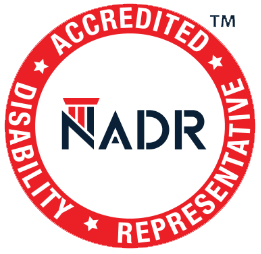Applying for Disability for Diabetes
Applying for disability for diabetes can be difficult. However, most diabetics do suffer from other related medical problems. Diabetes often causes medical complications or organ damage. If these complications are what limit your activity, you may qualify for disability benefits. Proving disability for diabetes can be tricky because there is not a Blue Book listing specific to Diabetes.
What is Diabetes?
Diabetes is a disease where your body becomes no longer able to process the sugars from the food that you eat.
Type I Diabetes
- Referred to as insulin-dependent diabetes.
- Usually, occurs in childhood and requires daily insulin injections and blood sugar level monitoring.
- Individuals are unable to produce the insulin which regulates blood sugar levels.
- Only about five to ten percent of diabetic individuals are diagnosed with Type I diabetes.
Type II Diabetes
- Occurs when the body’s cells become resistant to insulin, therefore failing to process sufficient amounts of glucose.
- Type II is most common in those over 45 years old.
- Often found in correlation with obesity, high blood pressure, and a sedentary lifestyle.
- Genetic factors may also contribute to developing Type II diabetes.
Diabetes is generally treated by endocrinologists, who prescribe medication, blood sugar monitoring, and lifestyle changes to control the disease. The SSA makes no distinction between Type 1 and Type 2 Diabetes, but as mentioned earlier, there is no specific listing in the “Blue Book” for Diabetes.
Applying for Disability for Diabetes
Many disabling conditions are a direct result of diabetes. Patients may be able to control elevated blood sugar levels through diet and medication. However persistent high blood sugar numbers can cause a myriad of effects such as nerve damage. Patients experience numbness, burning, and uncomfortable tingling in the extremities. Other complications may include cardiovascular disease, kidney problems, skin infections, and visual changes. It is in these circumstances that you would file your claim. You still need to meet the Social Security Administration’s (SSA’s) qualifications and criteria for Residual Functioning Capacity (RFC).
Impairments Related to Diabetes That May Qualify
First, you must be diagnosed with Diabetes either Type I or II. Next, you must experience one or a combination of the following:
- Retinopathy (eye and vision problems)
- Nephropathy (kidney disease)
- Neuropathy (nerve damage) in feet or hands that disrupt the ability to stand, walk, or limits use of hands
- Hypertension (high blood pressure)
- Heart Disease
- Stroke
- Gastroparesis (nerve damage that interferes with digestion)
- Peripheral Arterial Disease (reduces blood flow to your limbs)
- Cellulitis (ulcerous skin infections)
- Depression
Although applying for disability for diabetes may seem a daunting task, Disability Support Services is here to help. Contact us today for a consultation. Our dedicated team is ready to review your case and help you with your SSDI application process.



